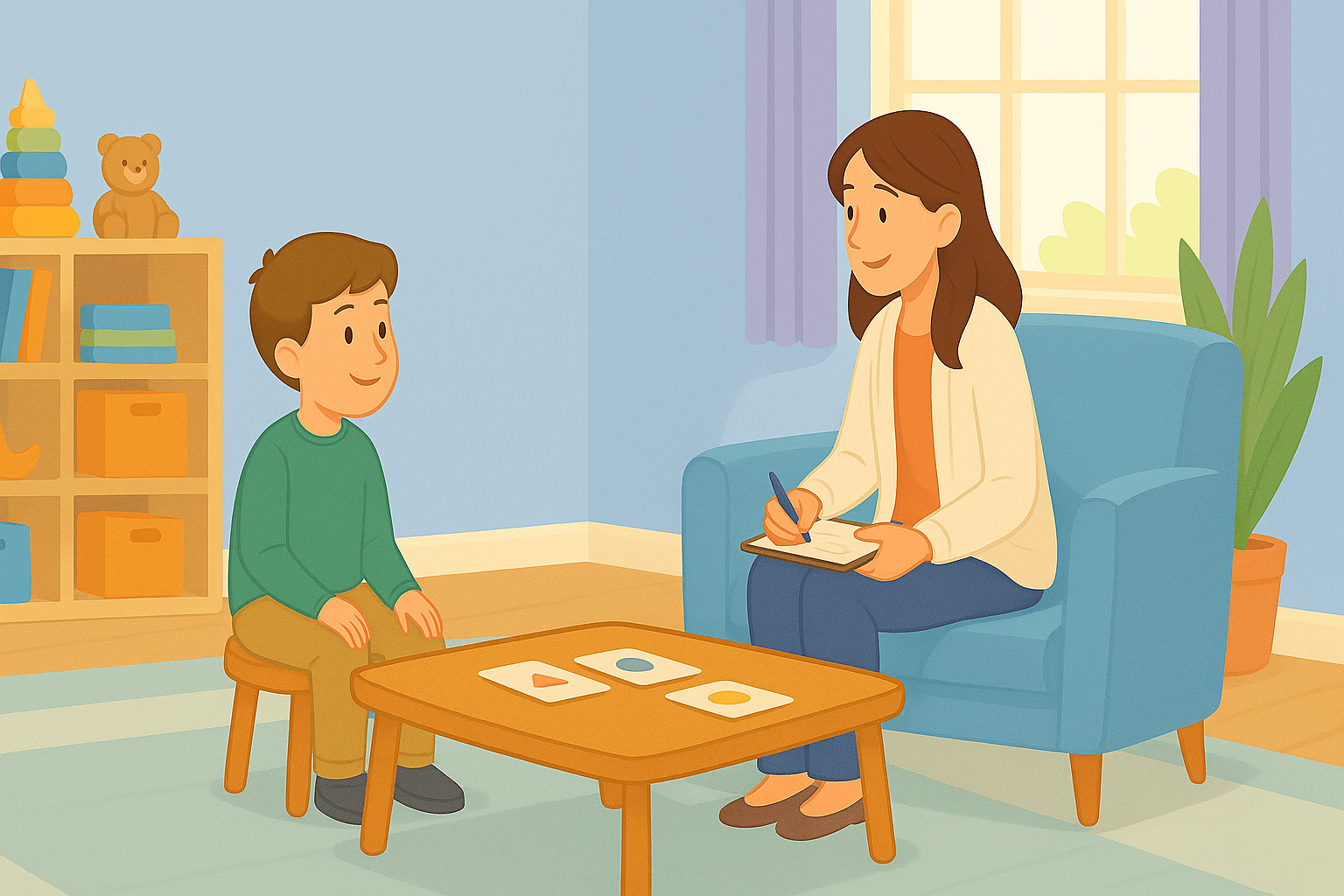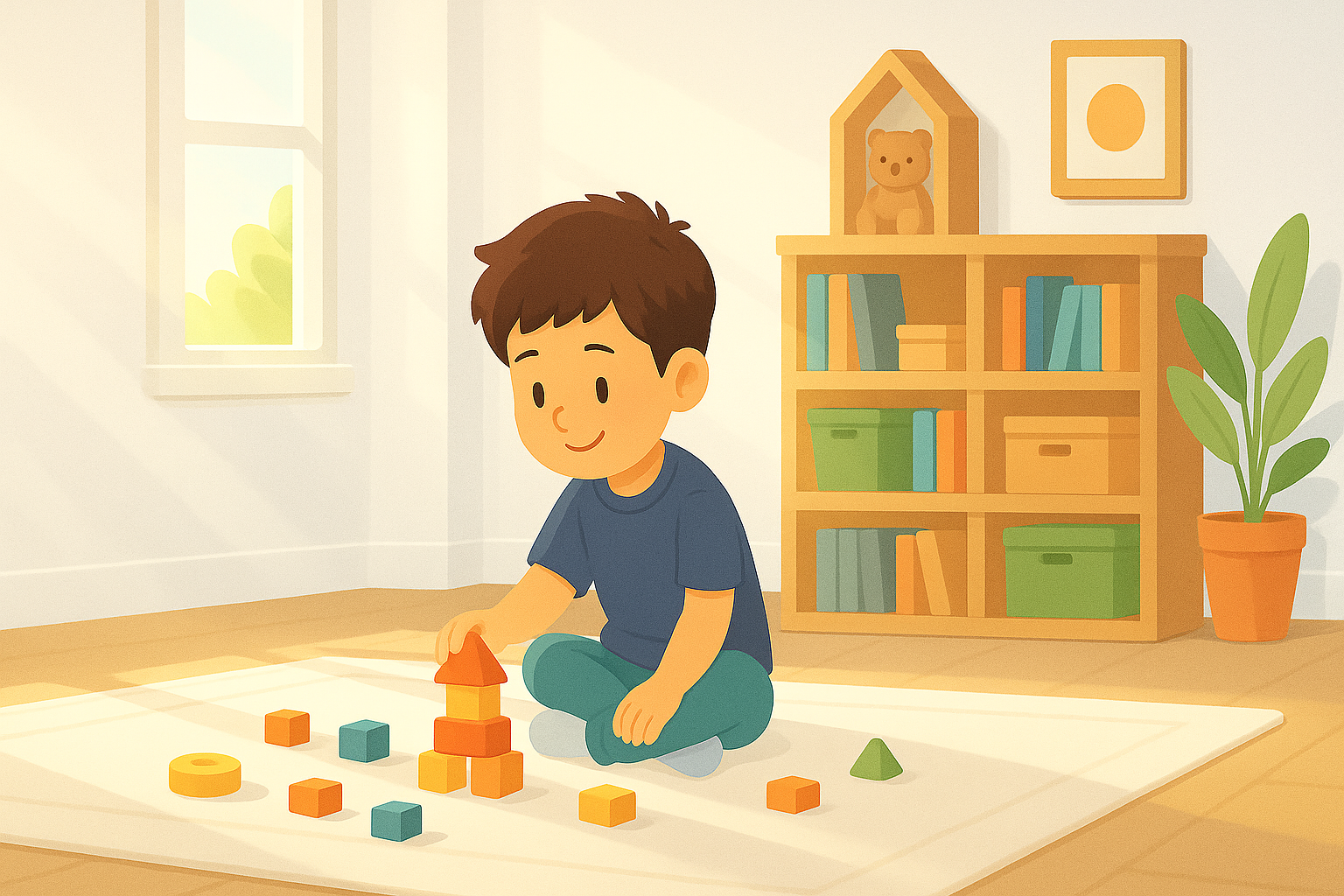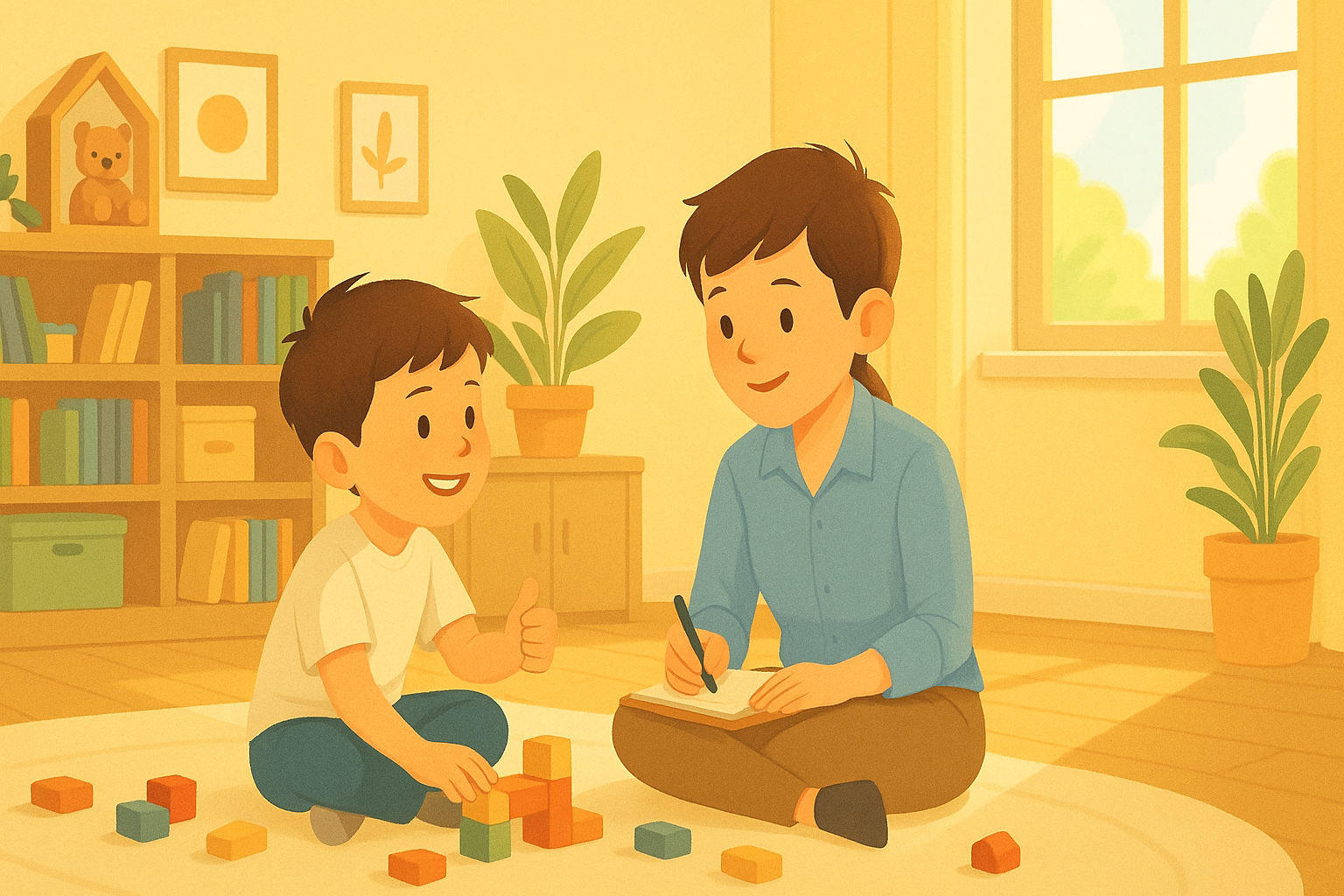
understanding behavioural therapy for children with autism
18 June, 2025
 Key Highlights
Key Highlights
-
Behavioural therapy, including ABA and CBT, is crucial in addressing unique challenges faced by children on the autism spectrum.
-
It aims to develop social skills, manage daily routines, and foster communication through structured interventions.
-
Approaches like Applied Behaviour Analysis focus on positive reinforcement to encourage desirable behaviours in various life situations.
-
Parent training is equally vital, offering the tools to support children’s development at home.
-
Families reliant on NDIS funding in Liverpool can access these therapies to improve their children’s mental health and independence.
-
Evidence-based techniques, tailored to individual needs, ensure therapeutic practices align with a child’s personality and specific skills.
Introduction
Are you looking for the best ways to help children with autism spectrum disorder? Behavioural therapy is often the key choice for many families. It can bring big changes in things like talking, making friends, and becoming more independent. These special programs help with a child’s mental health, and they also help parents play a bigger part in their child’s growth. There are different kinds of help, like the step-by-step methods of ABA therapy and learning new ideas with CBT. All these make daily living better for both children and their families.
What Is Behavioural Therapy for Children with Autism?
 Behavioural therapy aids children on the autism spectrum in developing essential life skills and managing daily challenges. It encompasses various interventions, including applied behaviour analysis (ABA) and cognitive behaviour therapy (CBT), both backed by research. ABA focuses on understanding behavioural triggers to promote positive actions, while CBT helps children identify and change anxious thought patterns. Sessions are tailored to each child's age and needs by ABA providers or CBT therapists within the context of childhood anxiety disorders. This therapy enhances social skills and daily routines, preparing children for school, fostering self-care, growth, independence, and emotional stability.
Behavioural therapy aids children on the autism spectrum in developing essential life skills and managing daily challenges. It encompasses various interventions, including applied behaviour analysis (ABA) and cognitive behaviour therapy (CBT), both backed by research. ABA focuses on understanding behavioural triggers to promote positive actions, while CBT helps children identify and change anxious thought patterns. Sessions are tailored to each child's age and needs by ABA providers or CBT therapists within the context of childhood anxiety disorders. This therapy enhances social skills and daily routines, preparing children for school, fostering self-care, growth, independence, and emotional stability.
Key Goals of Behavioural Therapy in Autism
Behavioural therapy, a specialised type of therapy, addresses the unique needs of young children with autism by enhancing social skills, daily living abilities, and emotional well-being. Additionally, occupational therapy plays a crucial role in the development of these skills. Utilising applied behaviour analysis, therapists employ positive reinforcement to encourage good behaviours and reduce negative emotions. Each child's therapy is tailored to ensure optimal support for their development. The goal is to help autistic children build meaningful relationships and thrive in life, improving overall quality of life for both children and families.
Improving Communication Skills
Improving communication skills is a key goal in behavioural therapy. The Picture Exchange Communication System (PECS) allows non-verbal children to use pictures to express their needs, facilitating social interactions and teaching them to communicate clearly. These skills boost children's confidence and help them navigate daily life.
In Cognitive Behavioural Therapy (CBT), therapists guide children in expressing their feelings and understanding how an individual thinks, including addressing unhelpful thoughts, through exercises that underscore the central premise of CBT, which is the interdependent relationships between cognition, behaviour, and emotion, including the essential components of CBT, although there is no universal set of principles. CBT intervention supports relaxation techniques that are also employed to reduce stress and enhance communication. As children begin speaking, speech experts tailor language instruction to their home and school environments.
When therapy is integrated into daily life, children with autism gradually learn to articulate their feelings and desires, improving social skills and fostering independence as they manage daily tasks and interactions.
Supporting Positive Behaviour and Social Interaction
Understanding children on the autism spectrum is important. When looking at ways to help, it is key to focus on positive behaviour and better social interactions. Using applied behaviour analysis, based on ABA principles, can help a lot with this. The Early Start Denver Model (ESDM) is one of the methods utilised, showing that a systematic review of these methods reveals ideas like positive reinforcement are at the heart of helping shape the way a child acts, getting them to follow rules, and making it easier for them to join in with other people. For some children, these approaches may be a good fit. Adding things like the picture exchange communication system can help the child talk and also cut down on negative emotions.
When help is shaped around the child’s needs, grown-ups and people who work with these children can push them to build good social skills. This leads to richer social interactions every day and helps improve the child’s overall wellbeing.
What to Expect During Behavioural Therapy Sessions
 Behavioural therapy sessions are often set up in a way that fits each child’s needs. Parents can see a mix of applied behaviour analysis and positive reinforcement in these sessions. The goal is to help improve the child's social skills and help with tough behaviours that may come up in daily life. Sometimes, the session uses the Picture Exchange Communication System to help the child talk better. Qualified people lead the sessions, making sure the plan changes for each child. They always look out for both the child’s growth and their feelings. A friendly space helps the child do better with social interactions and enjoy the time more. This helps your child get the most out of every session and can make their daily life better.
Behavioural therapy sessions are often set up in a way that fits each child’s needs. Parents can see a mix of applied behaviour analysis and positive reinforcement in these sessions. The goal is to help improve the child's social skills and help with tough behaviours that may come up in daily life. Sometimes, the session uses the Picture Exchange Communication System to help the child talk better. Qualified people lead the sessions, making sure the plan changes for each child. They always look out for both the child’s growth and their feelings. A friendly space helps the child do better with social interactions and enjoy the time more. This helps your child get the most out of every session and can make their daily life better.
Assessment, Goal Setting, and Progress Monitoring
At the heart of effective behavioural therapy lies thorough assessment, informed goal setting, and meticulous progress monitoring. Assessment evaluates domains like social communication, cognitive abilities, and adaptive behaviours, forming the blueprint for different interventions and category overviews that align with the scope of practice for personalised therapy plans.
|
Phase |
Description |
|---|---|
|
Assessment |
Identifying challenges in learning, speech, or autonomy. |
|
Goal Setting |
Developing measurable objectives based on observed difficulties. |
|
Progress Monitoring |
Tracking growth using qualitative and quantitative tools. |
Regular updates enable therapists and families to gauge success, such as improved interaction and reduced emotional outbursts. Tracking domains of learning ensures all skills are developed holistically. This continuous feedback loop guarantees therapy remains aligned with the child’s evolving needs.
Collaboration Between Therapists and Families
Effective therapy relies on strong partnerships between therapists and families, ensuring a clear understanding of the child's needs while promoting independence and positive behaviour. By leveraging diverse expertise from clinical practitioners—such as speech therapists and occupational specialists—sessions gain varied insights into interventions. Parental involvement is key; therapists guide families in applying strategies during meals, play, and daily routines, extending therapy's benefits beyond the clinic. Open communication fosters progress recognition and problem-solving, uniting everyone to support the child's growth and development.
Is Autism Behavioural Therapy Covered by the NDIS?
Yes, the NDIS may cover autism behavioural therapy. This depends on your own situation and what you need. You can get funding for this therapy if it helps with your support needs and goals. It is important to check your NDIS plan to see what is covered. You should also talk to the people who give the service for more details.
Navigating the NDIS Process for Autism Support
Getting NDIS support may seem hard at first. You can make it easier by taking these steps:
-
Evaluate Eligibility: Check if your child’s needs meet the NDIS minimum standards.
-
Plan Meeting: Talk with the planner about all autism therapies. This can be ABA or CBT, and see which work best for your child.
-
Submit Evidence: Give reports and documents from practitioners who have appropriate qualifications.
-
Adhere to Guidelines: Make sure what you suggest follows the national guideline that lists proven ways to help.
-
Monitor Services: Pick options that help with therapy goals and let your child join in with the community.
When families match their services with NDIS criteria, their child can get the most from therapies. This helps children be more independent and have a better and fuller life.
Learn how the NDIS supports behaviour plans in our detailed article on behaviour management.
Finding Autism Behavioural Therapy in Liverpool
Finding effective autism behavioural therapy in Liverpool requires exploring options that match your child's needs. Consider local health services, support groups, and knowledgeable schools. Families in Casula, Wattle Grove, Moorebank, Prestons, Chipping Norton, Hinchinbrook, Mount Pritchard, and Lurnea often seek trusted therapies nearby. Research practitioners' experience and methods to ensure they fit your child's requirements. By leveraging available evidence and considering practitioners' backgrounds, you can make informed decisions that improve your child's quality of life while accessing community support.
Conclusion
To sum up, it is important for parents to know about behavioural therapy for children with autism, as it plays a crucial role in the wellbeing of autistic children. This support type can help children to build better ways to talk, act in a positive way, and do things on their own. These changes can really make life better for both the child and the family. When parents work together with therapists and take part in what is being done, they help make sure the support fits what their child needs the most. If you are in Liverpool and need help with NDIS funding or looking for the right therapy, reach out to get expert help. Your child's path to feeling better and doing well in social situations can begin today. Get a free consultation to see what options are out there.
Frequently Asked Questions
How does behavioural therapy help improve social skills in children with autism?
Behavioural therapy helps kids on the autism spectrum build social skills. It helps them speak better, act with more confidence, and follow daily living routines. With steps like cognitive behaviour therapy (CBT) and ABA, as highlighted in the autism interventions evidence report, children start to show a variety of intervention components that lead to positive behaviour. This makes it easier for them to join in social interactions with other people.
What does behavioural therapy do for autism?
Behavioural therapy for autism helps children get better at talking and working with others, which is called social interactions. It also teaches them to have more good behaviours. The main goal is to help each child learn important life skills, find ways to cope, and make it easier for them to move around in their world. This can help improve their whole life over time.
What are the benefits of behavioural support in autism?
Behavioural support in autism can help in many ways. It may help children with better communication skills. They might also get better at social interactions and become more independent. This support can make it easier for them to deal with hard behaviours and manage their feelings. In this way, it can help create a better and more positive place for children with autism to live their daily lives.
Is behavioural therapy suitable for all children on the autism spectrum?
Behavioural therapy can help many children who are on the autism spectrum. But, it is important to look at each child's own needs and life when deciding if this is right for them. We need to see what their own problems and strengths are. This is key to finding a way that fits what they need as they grow and learn. By doing this, we can use an approach that works well for their autism spectrum needs.
.svg)












